Visit The Tomb Of Bahu Begum For A Historical Excursion In 2026
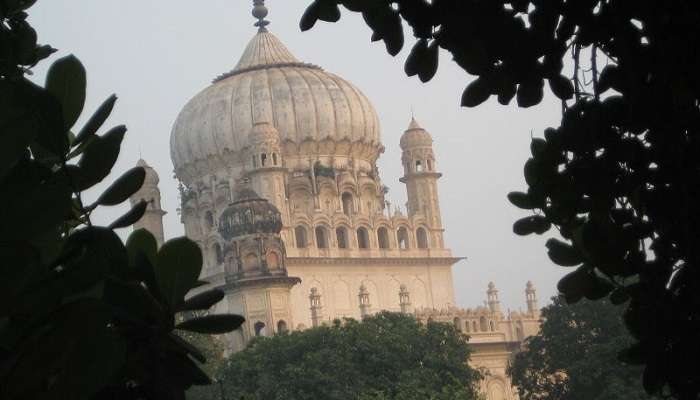
At a distance of 8 km from Ayodhya Junction, The tomb of Bahu Begum Is a mausoleum located on the Maqbara Road in Faizabad. It is one of the most popular heritage places in Uttar Pradesh and among the best tourist places in Ayodhya. A wonderful example of Awadhi architecture, the Bahu Begum ka Makbara has three domes, intricately designed interiors, and marvellously done walls and ceilings. The white marble retains its sheen and when seen in the moonlight, seems to give the tomb a sheen of immortality. Rising to a height of 42 m, it provides a beautiful view of the colourful Faizabad and its surroundings. The monument is maintained by the Archaeological Department of India.
About The Tomb Of Bahu Begum
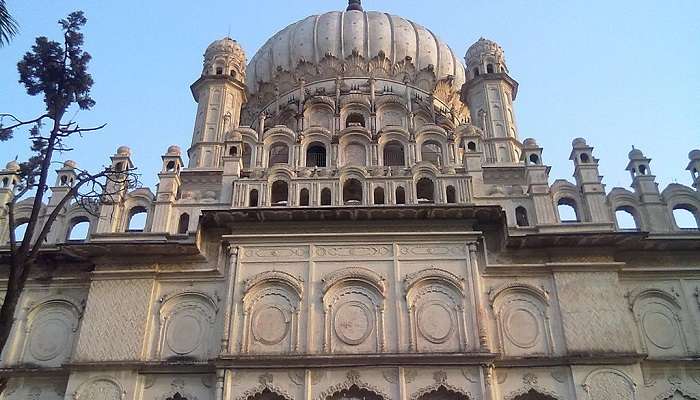
The Maqbara, also known as the Tomb of Bahu Begum, was built in 1816 and is the resting place of Unmatuzzohra Bano, the wife of Nawab Shuja-ud-Daula. The Nawab was the region’s ruler and had this mausoleum constructed in memory of his beloved wife, Bahu Begum. Upon its completion, the monument became synonymous with that era’s grandeur and exquisite Mughal architecture. Its significance lies in its historical context and the harmonious blend of Islamic and Indian architectural styles. Bahu Begum ka Maqbara features impressive characteristics such as a high central chamber, large bulbous domes, and fine minarets.
The structure is decorated with intricate carvings, calligraphy and floral patterns showcasing the artistic prowess of the craftsmen of the period. The mausoleum is surrounded by a well-maintained garden, further enhancing its aesthetic appeal and offering a tranquil haven for visitors. The Bahu Begum ka Maqbara is a gem in Ayodhya’s crown, reflecting the city’s layered history and offering a glimpse into the craftsmanship and artistry of a bygone era. As tourism trends evolve this mausoleum continues to be a focal point of interest for both domestic and international visitors keen to discover the rich tapestry of Indian heritage.
Must Read: Ayodhya Ram Mandir
Places To Visit Near Tomb Of Bahu Begum
Whether you are a history buff or an adventure seeker, there are tons of places to visit near the Tomb of Bahu Begum:
1. Gulab Bari
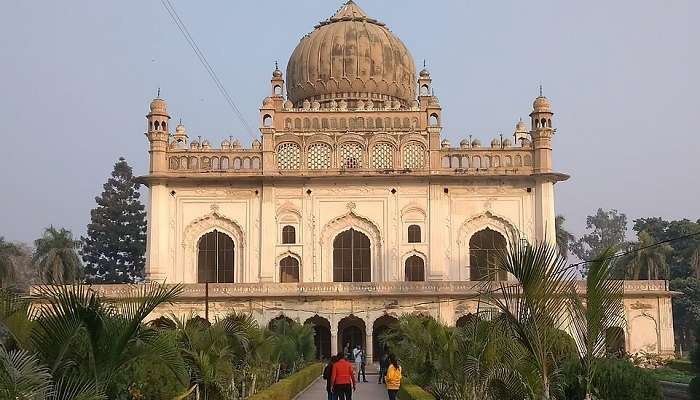
This beautiful garden tomb is the resting place of Nawab Shuja-ud-Daula, the third Nawab of Awadh. The complex features a central mausoleum surrounded by well-manicured gardens, fountains, and a mosque. Visitors can admire the intricate architecture and serene atmosphere. One can find more than 50 species of roses in this place. If you love flowers this place is gonna be heaven for you. While you are here, make sure to take many pictures to keep the memories alive.
Best Time To Visit: October to March
Things To Do: Sightseeing, know about the history of Awadh
2. Ram Janmabhoomi Temple
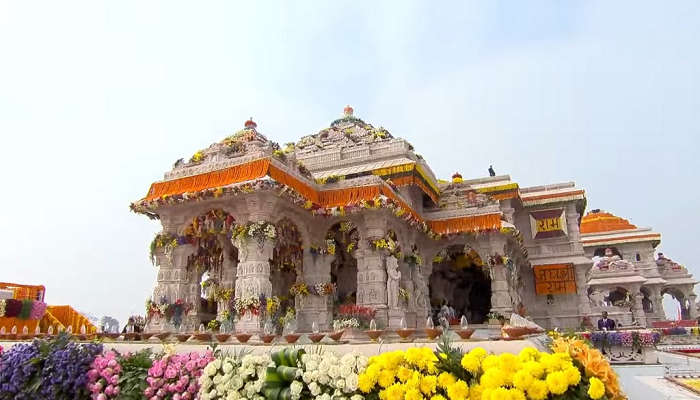
Faizabad is believed to be the birthplace of Lord Ram, and the Ram Janmabhoomi Temple is a sacred site for Hindus. The temple complex is currently under construction, but visitors can still experience the spiritual atmosphere and learn about the place’s historical significance. This temple is the epitome of beliefs, and spirituality. Many devotees come to visit this temple from across the world. While you are here, make sure to spend some time inside the temple ground.
Best Time To Visit: November to March
Things To Do: Sightseeing, learn about the historical and spiritual significance
Suggested Read: Hotels In Ayodhya
3. Guptar Ghat
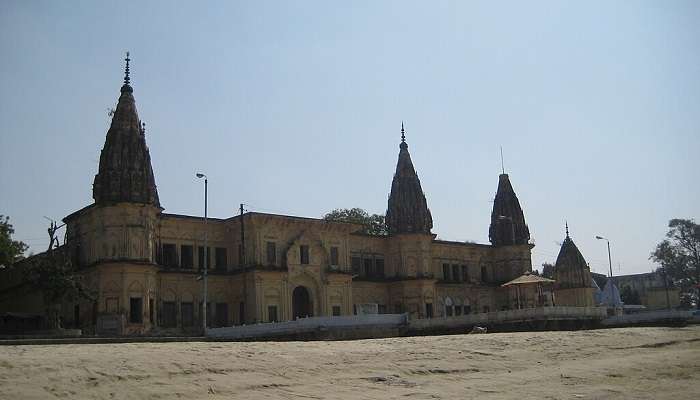
Located on the banks of the Saryu River, Guptar Ghat is a popular spot for religious ceremonies and bathing. According to Hindu mythology, this is the place where Lord Ram and his brothers performed the Pind Daan ritual for their father, King Dasharatha. Visitors can witness the evening aarti and enjoy the peaceful riverside setting. Visit Guptar Ghat for serene retreat while visiting the Tomb of Bahu Begum.
Best Time To Visit: November to February
Things To Do: See the Aarti, relax in the serene riverside
4. Moti Mahal
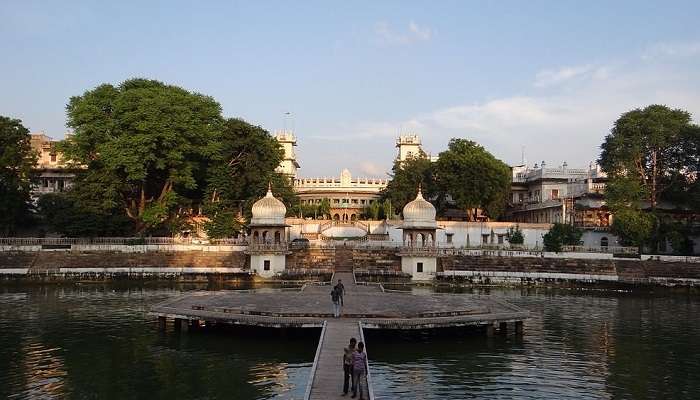
This ancient palace, built during the reign of Nawab Shuja-ud-Daula, now serves as a museum showcasing the region’s history and culture. Visitors can explore the various exhibits, including ancient artefacts, paintings, and manuscripts, to gain insights into the rich heritage of Faizabad and the Awadh region. The architectural wonder of Moti Mahal will take your breath away. This place is incredible and offers a scenic gateway to the tourists.
Best Time To Visit: October to March
Things To Do: Sightseeing
Suggested Read: Itmad-Ud-Daula
Best Time To Visit Tomb of Bahu Begum

The Bahu Begum ka Maqbara in Ayodhya, Uttar Pradesh, is an architectural marvel and a significant historical monument. If you’re planning to visit, the best time would be from October to March. During these months, the weather is pleasantly cool and suitable for exploring the outdoors. The temperature ranges from 12°C to 27°C, which is perfect for appreciating the splendid architecture without the discomfort of the scorching heat that is typical in the summer months.
Additionally, the winter season hosts several local festivals, offering a chance to experience the vibrant culture of Ayodhya alongside your visit to the mausoleum. It is advisable to avoid the summer months from April to June, as temperatures can soar up to 40°C, making sightseeing a challenging experience. Monsoon months from July to September also see a considerable amount of rainfall which might restrict outdoor activities and site exploration. For the most comfortable journey, consider visiting in the early mornings or late afternoons during the recommended months to enjoy the beauty of Bahu Begum ka Maqbara to its fullest. Also, check for local holidays and special events that might affect opening hours or provide a unique visiting experience.
How To Reach The Tomb Of Bahu Begum

The tomb of Bahu Begum is situated in Faizabad, Uttar Pradesh. There are various ways to reach the city easily.
By Flight
Although Varanasi Airport is relatively the farthest, it has the maximum probability of having international flights and could be the most relevant for foreign tourists. Spicejet, IndiGo and Air India provide service here. Faizabad has an old airstrip along the national highway (NH28) which has been neglected for a long time due to the lack of leadership. Efforts are being on to convert it into a full-fledged domestic airport by the Union government. It has been demanded that this airport be handed over to the Airports Authority of India so that scheduled domestic flights can be operable.
By Rail
The Indian Railways network connects Faizabad directly with Kanpur (4 hours), Lucknow (3 hours.), Varanasi (4 hours), Allahabad (5 hours) and also to New Delhi and Kolkata. Faizabad Superfast Express runs weekly from Faizabad Junction to Lokmanya Tilak Terminus, Mumbai. Likewise, Saket Express runs twice a week.
By Road
It is situated on NH 28 and has good connectivity with Kanpur (213 km), Lucknow (127 km), Varanasi (202 km), Allahabad (161 km), and Gorakhpur (165 km). National Highway 28 connects Lucknow to Barauni via Faizabad and Gorakhpur while National Highway 96 connects Faizabad to Allahabad via Sultanpur. Nawab Yusuf Road connects Varanasi to Faizabad via Jaunpur, and NH330A connects Raebareli to Faizabad via Kumarganj and Jagdishpur. State Transport Corporation buses run all the time.
Further Read: Places To Visit In Uttar Pradesh
Now that you have a list of things to remember for your next vacation to see the Auspicious city of Faizabad make sure you plan your trip to Uttar Pradesh to these fabulous spots for the experience of a lifetime. Don’t miss out on these opportunities and book your tickets now!
For our editorial codes of conduct and copyright disclaimer, please click here.
Cover Image Credit: Mukulfaiz for Wikipedia
Frequently Asked Questions About Tomb Of Bahu Begum
Who was Bahu Begum?
Bahu Begum was the wife of Nawab Shuja-ud-Daula, the third Nawab of Awadh. She was known for her intelligence, beauty, and influential role in the court of Awadh during the 18th century. Bahu Begum was also a patron of art, literature, and architecture.
When was the Tomb of Bahu Begum built?
The construction of the Tomb of Bahu Begum began in 1816, shortly after her death, and was completed in 1820. The mausoleum was commissioned by her son, Nawab Asaf-ud-Daula, as a tribute to his beloved mother and to serve as her final resting place.
What is the architectural style of the Tomb of Bahu Begum?
The Tomb of Bahu Begum showcases a unique blend of Mughal and Awadhi architectural styles. The monument features a large central dome, intricate carvings, and beautiful gardens. The use of white marble and red sandstone creates a striking contrast, adding to the visual appeal of the mausoleum.
What can visitors expect to see at the Tomb of Bahu Begum?
Visitors to the Tomb of Bahu Begum can admire the stunning architecture, explore the well-manicured gardens, and pay their respects at the tomb of Bahu Begum. The peaceful atmosphere and the intricate details of the monument make it a perfect spot for photography and quiet contemplation.
What are the visiting hours and entry fees for the Tomb of Bahu Begum?
The Tomb of Bahu Begum is open to visitors from sunrise to sunset, seven days a week. As of 2021, the entry fee for Indian citizens is Rs. 10, while foreign nationals are required to pay Rs. 100. It is advisable to check the current visiting hours and entry fees before planning your visit.
People Also Read:
Ibbankatuwa Megalithic Tombs Safdarjung Tomb Paigah Tombs

As a Travel Content Writer, I live to conquer the world of globetrotting with words. With my unquenchable thirst for storytelling, I believe that my words will inspire you to travel around the world’s breathtaking landscapes. As for me, I am an unapologetic selenophile, who loves to wander around in a starry night!











